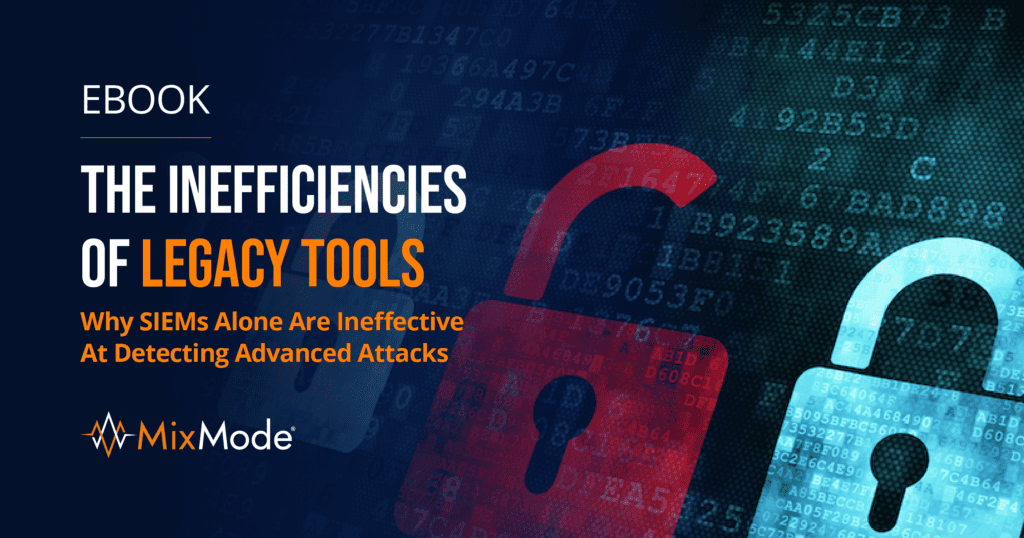In today’s changing threat landscape, organizations are exposed to a wide range of cyber risks that can jeopardize the security of their digital assets and sensitive information. As cyber threats continue to evolve, traditional security measures are no longer effective in providing adequate protection. In response to this growing challenge, the concept of defense-in-depth has emerged as a holistic and proactive approach to cybersecurity.
What is Defense-in-Depth?
Defense-in-depth is a cybersecurity strategy that emphasizes deploying multiple layers of security controls and countermeasures to protect critical assets and mitigate the impact of potential attacks. Rather than relying on a single point of protection, defense-in-depth seeks to create a resilient and multi-faceted security posture that can withstand and repel a wide range of cyber threats. By implementing a diverse array of security measures, organizations can significantly reduce the likelihood of successful attacks and limit the damage caused by security incidents.
Components of Defense-in-Depth
The components of a defense in-depth strategy encompass a wide range of security measures that collectively contribute to a comprehensive security posture. These components may include:
1. Perimeter Security: Traditional firewalls, intrusion detection systems, and intrusion prevention systems are deployed at the network perimeter to filter and monitor incoming and outgoing traffic, preventing unauthorized access and detecting potential threats.
2. Identity and Access Management (IAM): Robust IAM solutions are essential for managing user identities, enforcing access controls, and ensuring that only authorized individuals have access to sensitive resources.
3. Data Encryption: Encryption technologies protect data at rest and in transit, safeguarding it from unauthorized access and interception.
4. Endpoint Security: Endpoint protection platforms, including antivirus software, endpoint detection and response (EDR) tools, and mobile device management (MDM) platforms, secure end-user devices and prevent malware infections.
5. Security Awareness Training: Educating employees about cybersecurity best practices and raising awareness about common threats is crucial for building a human firewall and reducing the risk of social engineering and phishing attacks.
6. Application Security: Secure coding practices, web application firewalls, and regular security assessments are essential for mitigating vulnerabilities in software applications and preventing exploitation by attackers.
7. Incident Response and Disaster Recovery: Establishing robust incident response and disaster recovery plans enables organizations to effectively respond to security incidents, minimize downtime, and recover from disruptions.

Why Organizations Should Consider Defense-in-Depth
The adoption of a defense in-depth security strategy offers several compelling benefits for organizations to protect their attack surface, including:
1. Comprehensive Protection: By implementing multiple layers of security controls, organizations can create a more resilient security posture that addresses a wide range of potential threats.
2. Risk Mitigation: Defense-in-depth helps organizations reduce the likelihood and impact of successful cyber attacks, thereby minimizing the potential financial, reputational, and operational consequences of security incidents.
3. Regulatory Compliance: Many industry regulations and data protection laws require organizations to implement robust security measures. Defense-in-depth can help organizations demonstrate compliance with these requirements.
4. Adaptability: As cyber threats continue to evolve, a defense-in-depth approach allows organizations to adapt and strengthen their security defenses in response to emerging threats and vulnerabilities.
Strengths and Weaknesses of the Approach
The strengths of defense-in-depth lie in its ability to provide a layered and resilient security posture that can effectively mitigate a wide range of cyber threats. By diversifying security controls and countermeasures, organizations can reduce their overall risk exposure and enhance their ability to detect, prevent, and respond to security incidents. Additionally, defense-in-depth can help organizations address the limitations of individual security measures by compensating for their weaknesses with complementary layers of protection.
However, implementing a defense-in-depth strategy also presents certain challenges and potential weaknesses. Managing and coordinating multiple security layers can be complex and resource-intensive, requiring careful planning, integration, and ongoing maintenance. Additionally, the effectiveness of defense-in-depth relies on the proper configuration and coordination of security controls, as well as the continuous monitoring and assessment of the entire security ecosystem.
Defending Against Today’s Sophisticated Threats
In the face of today’s sophisticated cyber threats, defense-in-depth offers a proactive and adaptive approach to cybersecurity that can help organizations effectively defend against a variety of attack vectors. By integrating advanced technologies and best practices into a multi-layered security framework, organizations can address the following critical challenges posed by modern threats:
1. Advanced Persistent Threats (APTs): defense-in-depth can help organizations detect and mitigate APTs by combining network segmentation, threat intelligence, endpoint detection, and behavioral analytics to identify and respond to stealthy and persistent attacks.
2. Insider Threats: Robust identity and access management, user behavior analytics, and privileged access controls are essential components of defense-in-depth that can help organizations mitigate the risks posed by insider threats and unauthorized access.
3. Ransomware and Malware: Endpoint security solutions, network-based malware detection, and secure backup and recovery mechanisms are critical for defending against ransomware and malware attacks, which continue to pose significant risks to organizations.
4. Social Engineering and Phishing: Security awareness training, email filtering, and multi-factor authentication are essential elements of defense-in-depth that can help organizations combat social engineering and phishing attacks targeting employees and users.
Relying on Legacy Solutions in Not Enough for Defense-in-Depth
Relying on legacy solutions alone for a defense-in-depth strategy is not a good option for detecting advanced threats. Legacy solutions may not be equipped to effectively detect and mitigate the sophisticated and evolving nature of modern cyber threats due to:

1. Limited Visibility: Legacy solutions provide limited visibility into network traffic, user behavior, and emerging threats. They often lack the advanced analytics and monitoring capabilities required to detect subtle anomalies and indicators of compromise that are characteristic of advanced threats.
2. Inability to Adapt: Legacy solutions are often static and cannot adapt to rapidly changing threat landscapes. Advanced threats, such as zero-day exploits, ransomware and polymorphic malware, can easily evade signature-based detection methods commonly found in legacy solutions, rendering them ineffective in identifying and responding to these threats.
3. Lack of Behavioral Analysis: Many legacy solutions rely on static rule-based approaches and signature-based detection, which are insufficient for identifying sophisticated threats that exhibit non-standard behavior. Advanced threats often employ stealthy tactics and blend in with legitimate traffic, making them difficult to detect without robust behavioral analysis capabilities.
4. Inadequate Response Capabilities: Legacy solutions lack the real-time response capabilities necessary to effectively mitigate advanced threats. Without the ability to rapidly respond to emerging threats, organizations are at risk of prolonged exposure and potential damage caused by sophisticated attacks.
5. Integration Challenges: Legacy solutions may face integration challenges when attempting to work in concert with other security tools within a defense-in-depth strategy. This can lead to gaps in security coverage and hinder the organization’s ability to create a cohesive and layered security posture.
Utilizing MixMode for Defense-in-Depth
MixMode can easily integrate into a defense-in-depth strategy by providing advanced threat detection capabilities that enhance the overall security posture of an organization and add another layer of defense. MixMode’s AI-powered platform offers several key benefits that align with the principles of defense-in-depth and strengthen the organization’s ability to detect, prevent, and respond to cyber threats.
1. Behavioral Anomaly Detection: The MixMode Platform leverages Third Wave AI algorithms to analyze network traffic and user behavior, enabling the detection of abnormal activities that may evade traditional security controls. By identifying deviations from normal behavior patterns. The MixMode Platform enhances the organization’s ability to detect insider threats, advanced persistent threats, and other sophisticated attacks that may bypass perimeter defenses.
2. Continuous Monitoring and Analysis: The MixMode Platform provides real-time monitoring and analysis of network traffic, allowing for the proactive identification of potential security incidents and emerging threats. This continuous monitoring capability aligns with the defense-in-depth principle of maintaining constant vigilance across multiple layers of security, thereby enhancing the organization’s ability to detect and respond to threats at various stages of the attack lifecycle.
3. Adaptive Threat Detection: The MixMode Platform adapts to evolving threat landscapes and dynamically adjusts its detection capabilities to identify new and emerging threats. This adaptive approach complements the defense-in-depth strategy by providing a flexible and responsive security layer that can effectively address the changing nature of cyber threats, thereby bolstering the organization’s overall resilience against sophisticated attacks.
4. Integration with Existing Security Controls: The MixMode Platform can seamlessly integrate with existing security infrastructure, complementing and enhancing the capabilities of traditional security controls and contributing to the diversity and depth of the organization’s security defenses, thereby strengthening its overall security posture.
5. Reduced Alert Fatigue and False Positives: MixMode’s AI-driven approach to threat detection helps reduce alert fatigue by prioritizing and contextualizing security alerts based on their relevance and potential impact. By minimizing false positives and enabling security teams to focus on genuine threats, The MixMode Platform enhances the efficiency and effectiveness of the organization’s security operations, thereby supporting the defense-in-depth strategy by optimizing the utilization of security resources.
A defense-in-depth strategy with MixMode represents the proactive and comprehensive approach needed to defend against today’s sophisticated cyber threats. By integrating MixMode’s AI-powered threat detection, real-time monitoring, adaptive security capabilities, and seamless integration with existing security controls, organizations can create a resilient and multi-layered defense that effectively mitigates the risks of advanced threats often missed or not detected by legacy security solutions.
The MixMode Platform’ aligns with the principles of defense-in-depth, enabling organizations to detect, prevent, and respond to a wide range of cyber threats at various stages of the attack lifecycle.
Reach out to learn more about how we can help you strengthen your security posture.
Other MixMode Articles You Might Like
Overcoming Cloud Security Challenges: The Power of Cloud-Native AI-Driven Solutions
Under Siege: Ransomware and Your Business
Ethan Caldwell, Chief Development Officer of MixMode, Joins Forbes Technology Council
Proactive Defense: The Importance of Analyzing User Identity Data in a Zero Trust Framework


